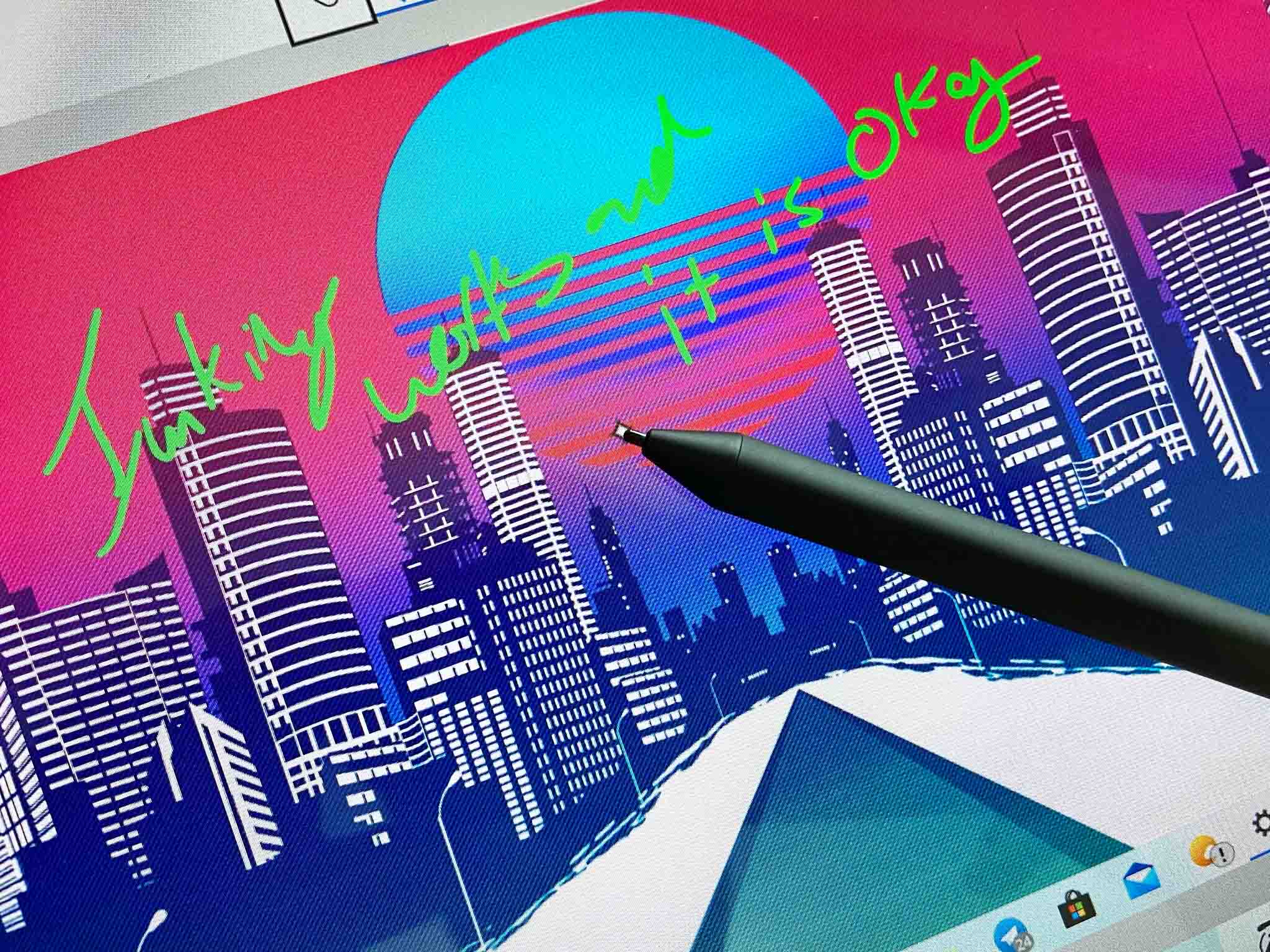'Dynamic Refresh Rate' in Windows 11 could rival Apple's ProMotion displays in future Surface PCs
 Source: Daniel Rubino / Windows Central
Source: Daniel Rubino / Windows Central
What you lot need to know
- Windows 11 Insider builds are now available.
- Microsoft'southward annunciation mentions Dynamic Refresh Charge per unit (DRR) as being available on some devices.
- The tech differs from Variable Refresh Charge per unit (VRR) for gaming and suggests Surface hardware with refresh rates of higher than 60 Hz could be coming before long.
A new characteristic coming to some Insider builds of Windows 11, which is expected to ship later this fall, hints at new Surface hardware with refresh rates of higher than 60Hz.
Dynamic Refresh Rate, or DRR, is different than the Variable Refresh Rate (VRR) that has been in Windows x for a while, which focuses on gaming to prevent screen-tearing. Instead, DRR applies to all of Windows xi when using the Bone for everyday mundane tasks.
Here is why it'due south a large deal.
Dynamic Refresh Rate: Better battery life
 While it looks great, high-refresh rates kill a laptop's bombardment. Source: Windows Central
While it looks great, high-refresh rates kill a laptop's bombardment. Source: Windows Central
Microsoft describes DRR in its release notes for the Windows eleven Insider build as thus:
Dynamic Refresh Charge per unit allows your PC to automatically boost the refresh charge per unit when you lot're inking or scrolling (which means yous'll get a smoother feel) and lower when you don't demand information technology and so that your laptop can save power.
Today, almost all non-gaming laptops only support a 60 Hz refresh rate, while many gaming laptops can hit 120 Hz or as high as 300 Hz.
The issue with loftier refresh rates on a gaming laptop is that it runs at that 120 Hz all the time, doubling the draw on the display since it is refreshing twice every bit fast as a regular 60 Hz laptop. Such a refresh rate destroys good battery life every bit the screen is ane of the pinnacle draws of bombardment power.
With DRR, that won't be the case.
The Bone will now drop the refresh rate when the screen is static but apace boost it when scrolling or moving effectually windows. While we don't know how depression the refresh rate goes, it certainly beats running at 120 Hz or college all the time, and information technology should have a significant improvement on battery life, particularly for gaming laptops.
Microsoft gives more than details about DRR in a new web log post:
Dynamic refresh rate is a new feature that can be found in Windows Insider builds (Dev channel) on supported devices. Like the proper name suggests, DRR lets your device set the refresh rate dynamically. This means that Windows 11 will seamlessly switch between a lower refresh rate and a college refresh rate based on what you're doing on your PC. This helps to residue functioning and power consumption. For example, with a Dynamic (60 Hz or 120 Hz) style, your brandish will refresh at 60 Hz for everyday productivity tasks, such as e-mail, writing a document, then forth to conserve battery life. It will and so seamlessly switch to 120 Hz for tasks such as inking and scrolling, to provide a smoother and more responsive experience.
Moreover, not all apps support it right out of the box, but these do, co-ordinate to Microsoft:
- Smoother inking: Microsoft Office, Microsoft Edge, Microsoft Whiteboard, Microsoft Photos, Snip & Sketch, Drawboard PDF, Microsoft Sticky Notes, Adobe Acrobat, Adobe Illustrator, Microsoft To Practice, Inkodo
- Smoother scrolling: Microsoft Office
Dynamic Refresh Rate: New Surface hardware?
 Source: Daniel Rubino / Windows Primal
Source: Daniel Rubino / Windows Primal
I think the other conclusion we can draw is that DRR is not just for gaming laptops. Many users take been request for 90Hz or higher refresh rates in regular Ultrabook laptops for some fourth dimension. The problem is battery life takes a hit, but that now appears to be solved with this technology.
Apple tree'south iPad Pro features a "ProMotion display," which varies the display between 60 and 120 FPS (Hz). It is one reason people dearest the iPad Pro and using the Pencil as information technology feels more fluid due to that improved refresh. Moreover, Microsoft mentions "inking" with this feature, which is very curious…
Intriguingly, in that location are no Surface products that back up displays with higher than 60 Hz. That makes DRR less effective on electric current hardware, as you need at least a 90 Hz refresh (or even 120 Hz) to make it worthwhile. And Microsoft has clarified that to make DRR work, yous need "a laptop with a display that supports Variable refresh rate (VRR) and a refresh rate of at least 120 Hz."
When combined with Microsoft's new haptic pen engineering, wake on touch, and now DRR, information technology seems nosotros are finally getting some thought of where Microsoft sees PC hardware going later on in 2022 and 2022. These are some significant advancements in usability, and it'll be very curious to see if a new Surface Pro eight, which could be announced in October, features all this new tech.
Lookout man this space.
We may earn a commission for purchases using our links. Larn more.

Future plans for FFXIV
Post-launch roadmap for Terminal Fantasy XIV: Endwalker revealed
The latest Letter of the alphabet from the Producer livestream has just aired, and it comes with a plethora of news for Final Fantasy XIV. This includes plans for updating all the main scenario quest dungeons, improving the graphics, implementing new sidequests, and much more than.
Source: https://www.windowscentral.com/dynamic-refresh-rate-windows-11-surface-hardware
Posted by: wilsonthisity93.blogspot.com


0 Response to "'Dynamic Refresh Rate' in Windows 11 could rival Apple's ProMotion displays in future Surface PCs"
Post a Comment